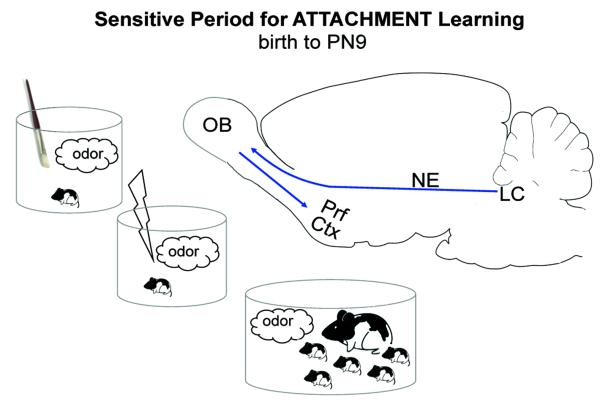Figure 1.
Young infant rat pups very rapidly learn a new maternal odor. This learning is supported by a wide range of stimuli functioning as a reward that when paired with an odor results in the acquisition of a new maternal odor. For example, a novel odor paired with either tactile stimulation (mimics maternal licking), a mildly painful 0.5 mA shock/tailpinch (mimic mother stepping on pups/handling them roughly), or maternal care produces a new maternal odor. This learning is supported by a simplistic neural circuit (blue arrows) that requires the pairing of the novel odor with increased locus coeruleus (LC) norepinephrine (NE) release into the olfactory bulb (OB). Learning induced changes are found in the OB and anterior piriform cortex (Prf Ctx). At around PN (postnatal day) 10, functional emergence of the LC recurrent collaterals stimulate alpha-2 postsynaptic receptors, which terminate LC firing and provide insufficient levels of NE to the olfactory bulb to support the plasticity required for learning the new maternal odor [64,65,79-81,85,100-118,148].

